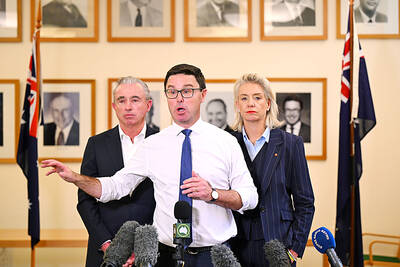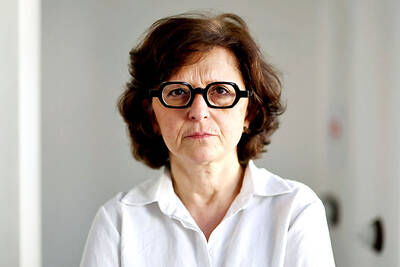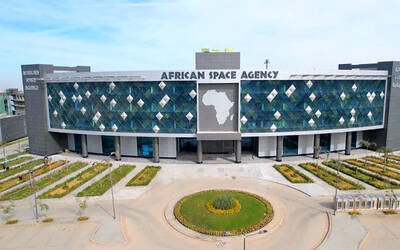British doctors designed a radical solution to save a girl with major heart problems in 1995: They implanted a donor heart directly onto her own failing heart.
After 10 years with two blood pumping organs, Hannah Clark’s faulty one did what many experts had thought impossible: It healed itself enough so that doctors could remove the donated heart.
But she also had a price to pay: The drugs Clark took to prevent her body from rejecting the donated heart led to malignant cancer that required chemotherapy.
Details of Clark’s revolutionary transplant and follow-up care were published online yesterday in the medical journal Lancet.
“This shows that the heart can indeed repair itself if given the opportunity,” said Douglas Zipes, a past president of the American College of Cardiology.
Zipes was not linked to Clark’s treatment or to the Lancet paper.
“The heart apparently has major regenerative powers and it is now key to find out how they work.”
In 1994, when Clark was eight months old, she developed severe heart failure and doctors put her on a waiting list to get a new heart. But Clark’s heart difficulties caused problems with her lungs, meaning she also needed a lung transplant.
To avoid doing a risky heart and lung transplant, the doctors decided to try something completely different.
Magdi Yacoub of Imperial College London, one of the world’s top heart surgeons, said that if Clark’s heart was given a time-out, it might be able to recover on its own. So in 1995, Yacoub and others grafted a donor heart from a five-month-old directly onto Clark’s own heart.
After four-and-a-half years, both hearts were working fine, so Yacoub and colleagues decided not to take out the extra heart.
The powerful drugs Clark was taking to prevent her from rejecting the donor heart then caused cancer, which led to chemotherapy. Even when doctors lowered the doses of drugs to suppress Clark’s immune system, the cancer spread, and Clark’s body eventually rejected the donor heart.
Luckily, by that time, Clark’s own heart seemed to have fully recovered. In February 2006, Victor Tsang of Great Ormond Street Hospital in London, Yacoub and other doctors removed Clark’s donor heart.
Since then, Clark — now 16 years old — has started playing sports, gotten a part-time job and plans to go back to school in September.
“Thanks to this operation, I’ve now got a normal life just like all of my friends,” said Clark, who lives near Cardiff.
Her parents marveled at her recovery, and said that at one point during Clark’s illness, they were told she would be dead within 12 hours.
Miguel Uva, chairman of the European Society of Cardiology’s group on cardiovascular surgery, called Clark’s case “a miracle,” adding that it was rare for patients’ hearts to simply get better on their own.
“We have no way of knowing which patients will recover and which ones won’t,” Uva said.
Still, transplants like Clark’s won’t be widely available to others because of a shortage of donor hearts and because the necessary surgeries are very complicated. In the last few years, artificial hearts also have been developed that can buy patients the time needed to get a transplant or even for their own heart to recover.
Zipes said if doctors can figure out how Clark’s heart healed itself and develop a treatment from that mechanism, many other cardiac patients could benefit.
Some think there are a small number of stem cells in the heart, which may somehow be triggered in crisis situations to heal damaged tissue.
Experts said Clark’s example is encouraging.
“It reminds us that not all heart failure is lethal,” said Ileana Pina, a heart failure expert at Case Western Reserve University in Ohio and spokeswoman for the American Heart Association.

BACKLASH: The National Party quit its decades-long partnership with the Liberal Party after their election loss to center-left Labor, which won a historic third term Australia’s National Party has split from its conservative coalition partner of more than 60 years, the Liberal Party, citing policy differences over renewable energy and after a resounding loss at a national election this month. “Its time to have a break,” Nationals leader David Littleproud told reporters yesterday. The split shows the pressure on Australia’s conservative parties after Prime Minister Anthony Albanese’s center-left Labor party won a historic second term in the May 3 election, powered by a voter backlash against US President Donald Trump’s policies. Under the long-standing partnership in state and federal politics, the Liberal and National coalition had shared power

CONTROVERSY: During the performance of Israel’s entrant Yuval Raphael’s song ‘New Day Will Rise,’ loud whistles were heard and two people tried to get on stage Austria’s JJ yesterday won the Eurovision Song Contest, with his operatic song Wasted Love triumphing at the world’s biggest live music television event. After votes from national juries around Europe and viewers from across the continent and beyond, JJ gave Austria its first victory since bearded drag performer Conchita Wurst’s 2014 triumph. After the nail-biting drama as the votes were revealed running into yesterday morning, Austria finished with 436 points, ahead of Israel — whose participation drew protests — on 357 and Estonia on 356. “Thank you to you, Europe, for making my dreams come true,” 24-year-old countertenor JJ, whose

A documentary whose main subject, 25-year-old photojournalist Fatima Hassouna, was killed in an Israeli airstrike in Gaza weeks before it premiered at Cannes stunned viewers into silence at the festival on Thursday. As the cinema lights came back on, filmmaker Sepideh Farsi held up an image of the young Palestinian woman killed with younger siblings on April 16, and encouraged the audience to stand up and clap to pay tribute. “To kill a child, to kill a photographer is unacceptable,” Farsi said. “There are still children to save. It must be done fast,” the exiled Iranian filmmaker added. With Israel

Africa has established the continent’s first space agency to boost Earth observation and data sharing at a time when a more hostile global context is limiting the availability of climate and weather information. The African Space Agency opened its doors last month under the umbrella of the African Union and is headquartered in Cairo. The new organization, which is still being set up and hiring people in key positions, is to coordinate existing national space programs. It aims to improve the continent’s space infrastructure by launching satellites, setting up weather stations and making sure data can be shared across